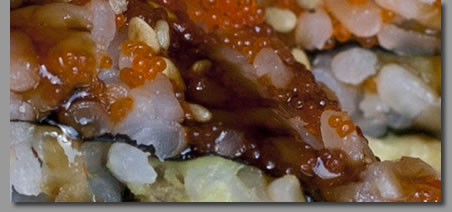The Season of the Soft-Shelled Crabby Julie Goldstein, Bull and Buddha
It’s the time of the year when the weather is warm, yet a soft cool breeze still lingers. To many people, the smell of Spring’s crisp air alone evokes the well-awaited season for ramps, morels, and soft-shell crabs. May marks the beginning of the season for the beloved crustacean across the East Coast, which typically lasts until September.
Contrary to belief, soft-shell crab is not a species of crab; rather, it is the crab after it sheds its exoskeleton, or shell. As the crab grows, it needs a bigger shell, so it molts its smaller one. The time to tear into these sea creatures is before the new shell hardens. At this stage in its molting period, soft-shell crab can be eaten in its entirety—that’s right, the whole crab is edible. Not all species of crab are edible in this form. In fact, soft-shell crabs are primarily blue crabs, as they are larger in size and therefore have more meat to savor. The blue crab’s technical name is callinectes sapidus, which translates to “beautiful savory swimmer”—a truly fitting name for these tasty crustaceans.
Over 100 years ago, the watermen of Crisfield, Maryland, introduced the soft-shell crab to the seafood industry, and eventually the world of adventurous eaters. Experienced watermen know exactly what to look for and when it’s the peak time to catch the crab—the hue of the line on the back fin of the crab indicates where the crab is in the molting process. If the line is white, the crabs will shed their shell in seven days. And if the line is pink, the crab will molt in two to seven days; and if the line is red, the crab could shed its shell at any moment.
A little known fact: There is a large and continuously growing population of blue crabs in the Hudson River. And although Maryland is famous for blue crabs (seasoned with Old Bay, of course), many of their crabs actually come from the Hudson Valley area. (However, it’s doubtful the crab industry will admit to that fact!) Soft-shell crab is favored deep-fried, often as the highlight of sandwiches, as well as other dishes around the world. But the crab is carefully rolled into the Spider Roll at Bull and Buddha.
If you opt to cook soft-shell at home, it is best to eat the day you purchase them. Have your fishmonger clean them for you, which will save you some time and mess. If you want to clean them yourself, all you will need is a pair of scissors: Simply cut the head behind the eyes, then cut the apron off (the back flap under the tail) and the gills. Rinse the crabs under running cold water and pat dry.

Spider Roll Recipe (makes 6)
3 sheets of nori seaweed
½ cup sushi rice (see process below)
3-4 soft shell crabs
oil for deep frying (canola or peanut are best)
tempura batter (see process below)
1 avocado, cut in thin slices
1 cup warm water with 2 tbsp. white vinegar
bamboo mat for sushi rolling
to prepare the sushi rice, you need:
2 cups water
4 tbsp. rice vinegar
4 tbsp. granulated sugar
Rinse the rice well in cold water until water runs clear. Drain and let rice sit for 30 minutes. Combine vinegar and sugar in non-metal bowl. Combine water and rice in a saucepan, and bring to a boil uncovered. Cover, reduce heat to simmer and cook for 15 minutes. Remove from heat, keep covered for 10 more minutes. Transfer rice to glass or other non-metal dish to cool. Gently stir with wooden spoon while drizzling in sugar/vinegar mixture.
For the tempura batter:
1 large egg
1 cup all-purpose flour
1 cup ice water
1 tsp. salt
Beat egg well, add ice water. Slowly sprinkle flour and salt in, whisk until just combined. Don’t over mix.
Now, for the sushi:
Heat oil in large pot, filled to halfway. Test the oil temperature with a sprinkle of tempura batter; if it bubbles, the oil is ready. Dip crabs into batter, and gently slide one by one into oil. Don’t let crabs sink to bottom; hold each up for at least the first five seconds before leaving. Cook until crabs are golden brown, using wooden chopsticks to separate and keep legs straight. Remove crabs from oil, gently pat dry on paper towel-lined plate.
Cut each nori sheet in half. Place nori shiny side down, horizontally, on bamboo mat. Dampen fingers in vinegar water (keeps rice from sticking), and spread ¼ cup of sushi rice evenly on nori. Cut crabs into halves or thirds, whatever is manageable for the roll. Line up crab piece(s) and a few avocado slices near center of rice, grab mat and start rolling plank over onto itself, keeping the roll compact. When the first cycle of the roll is complete, gently squeeze roll with fingertips to keep firm, and continue rolling. Remove roll from mat, place on cutting board, and with a sharp knife cut roll in halves until pieces are the desired size. Serve with wasabi paste, pickled ginger, and soy sauce.
Bull and Buddha Restaurant fuses an urban interior with exotic design elements of the East nestled in Poughkeepsie’s revitalized downtown. Served under the watchful eye of a hand-carved two-ton Buddha, the Asian-themed menu reflects the bounty and diversity of the Hudson Valley: an inspired dining experience in a chic yet casual setting. Bull and Buddha is located at 319 Main St., Poughkeepsie, www.bullandbuddha.com, 845.337.4848. Open Mo-Th 11:30 AM-10 PM, Fr/Sa 11:30 AM-1 AM, Sunday Brunch 11 AM-8 PM. Closed 3-5 PM daily except Su.
[top]











